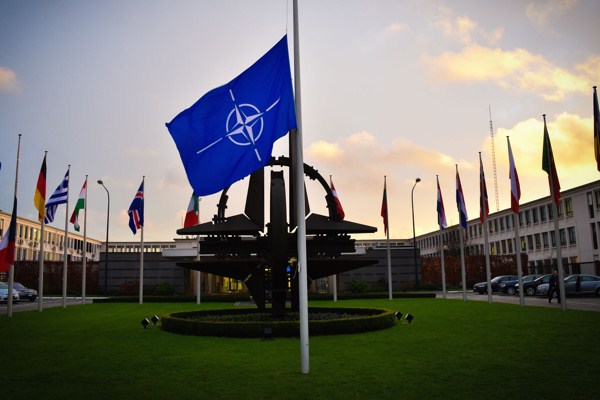This past weekend, militants in Libya aligned with the so-called Islamic State (IS) brutally executed 21 Egyptian Coptic Christians they had captured. As the victims’ blood flowed into the Mediterranean Sea, their executioner declared, “We will conquer Rome, by Allah’s permission.” Even as most of Europe’s attention remains focused on the east and the fighting in Ukraine, the horrific murders highlight the threat the continent faces to the south. They also serve as yet another reminder, if one were necessary, that the operation to depose former Libyan leader Moammar Gadhafi, once praised as a successful example of the responsibility to protect doctrine, has had dangerous consequences.
In particular, the North Atlantic Treaty Organization (NATO) is now faced with a double crisis simultaneously impacting different sectors of the alliance. The northern and eastern alliance members worry about the rise of a potentially more aggressive and unpredictable Russia, one that is able and willing to use the techniques of “special war” to push back against Euro-Atlantic expansion and reassert a Russian sphere of interest around its borders. This fits in with NATO’s traditional horizontal orientation, which envisioned first the Soviet Union and then Islamic extremism emanating from greater Central Asia as the principal threats to Europe.
But Europe’s security challenges are increasingly running along a vertical axis: migrants, traffickers and terrorists who use the Mediterranean Sea as their highway into the European Union. The emergence of training grounds and safe havens in IS-controlled territory in Syria and Libya for those who commit terror acts in Europe, especially after the Paris and Copenhagen attacks, is a reminder of the threat. The weakening of authoritarian regimes that previously helped to guarantee security, partially as a result of the Arab Spring, has removed some of the lines of defense that have shielded NATO’s southern and western members in the past and puts more burdens on the frontline European states. In the aftermath of the collapse of the Soviet Union, these members argued that the alliance ought to do more to guarantee Europe’s Mediterranean frontiers and wanted to see a greater shift in emphasis from the east to the south. This newer conception of NATO breaks with the traditional understanding of the alliance’s role in “keeping the Russians out,” as Lord Ismay put it in his immortal quip, and does not sit well with many of NATO’s new Central and Eastern European members who worry about any weakening of the focus on the threat posed by Moscow. These divisions were crystal clear in the 2011 NATO operation in Libya: The further north and east one went, the less support for the mission one detected.

